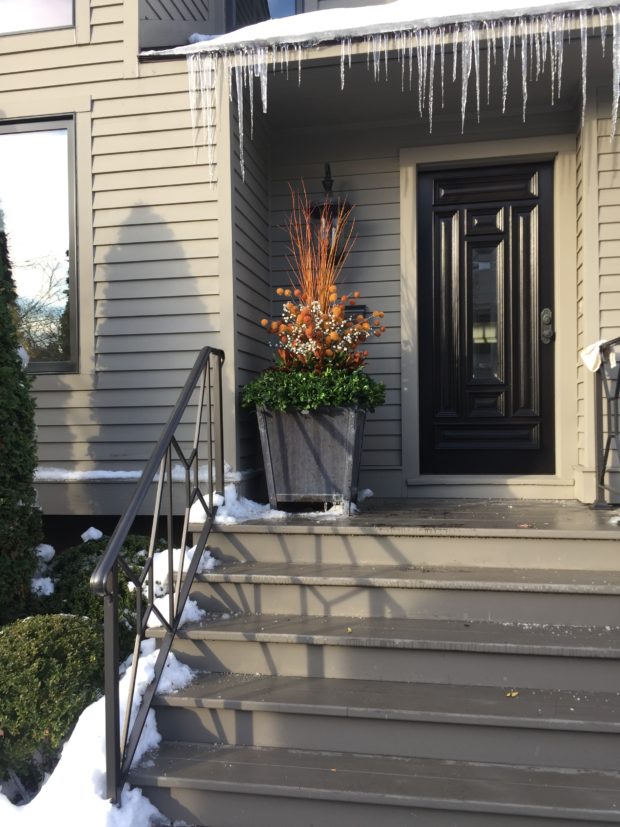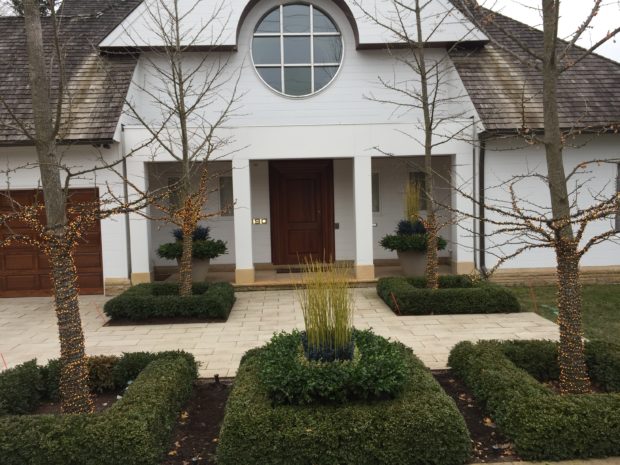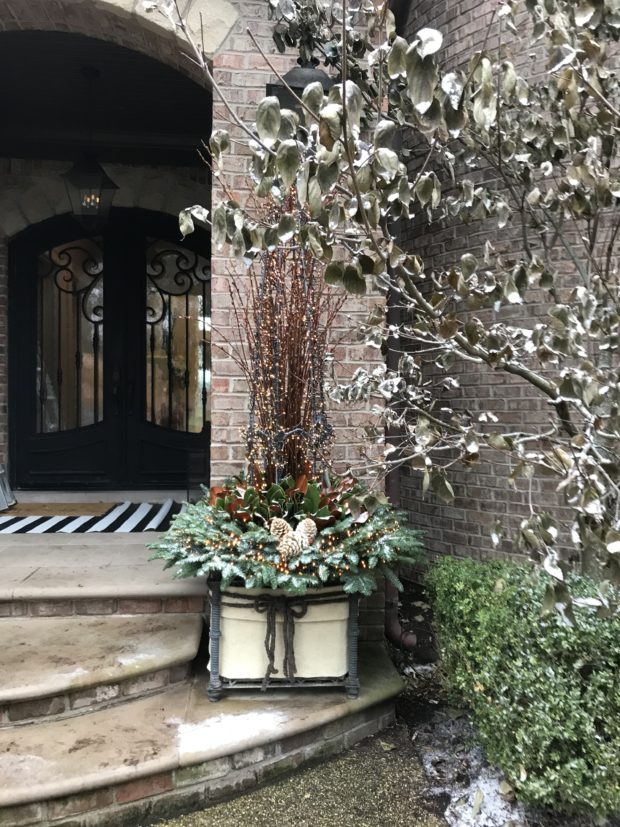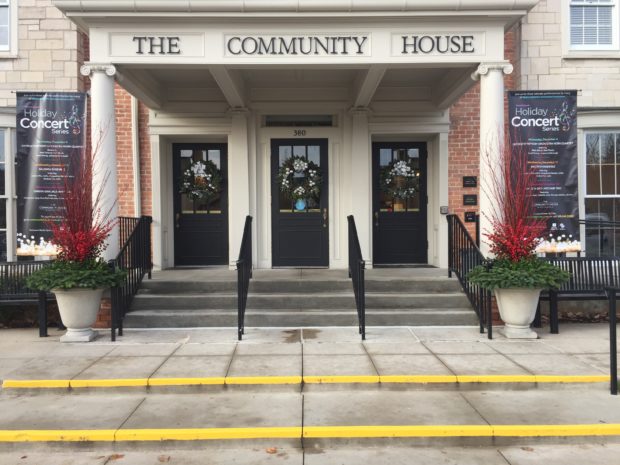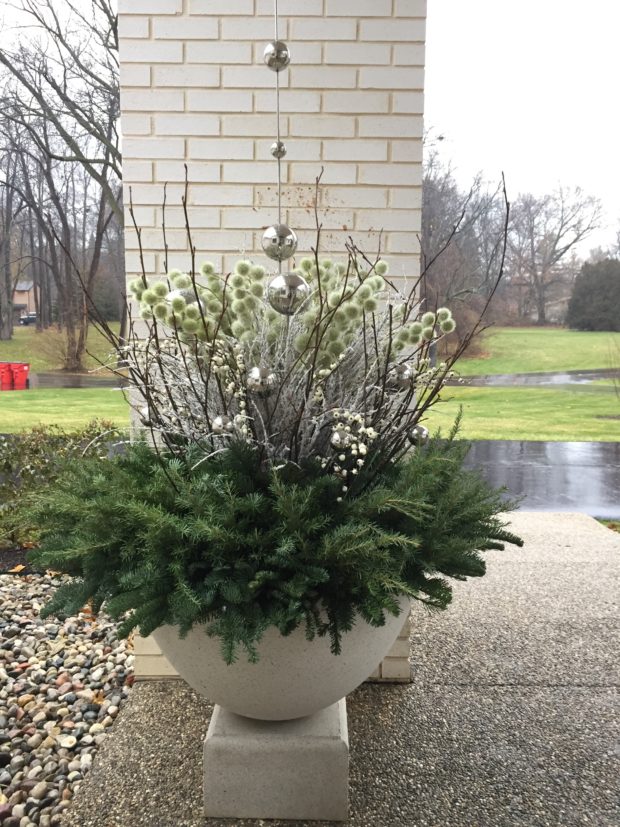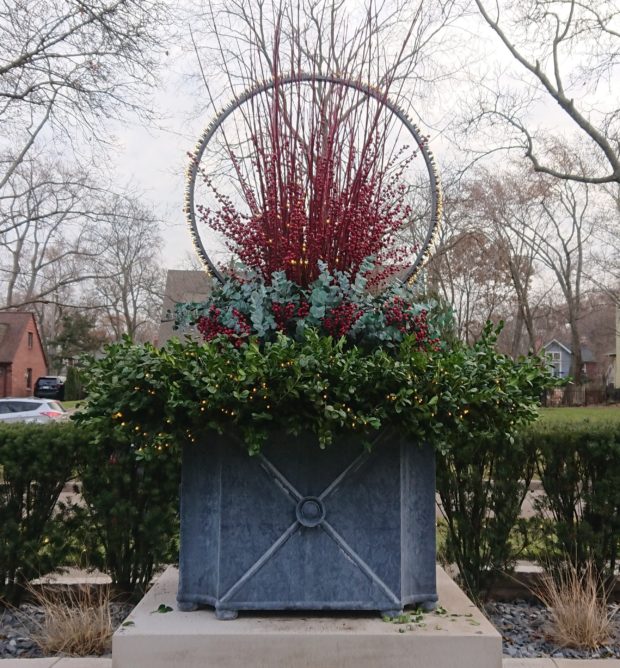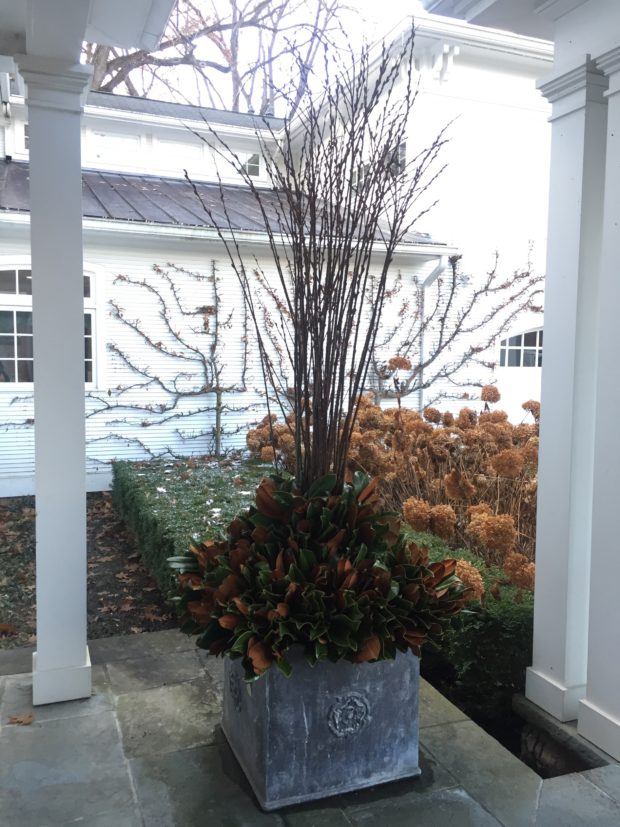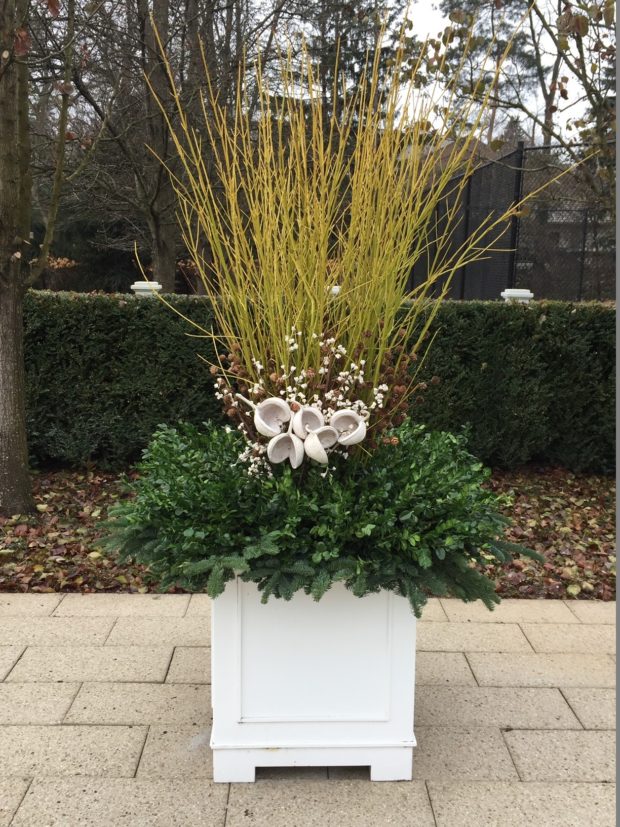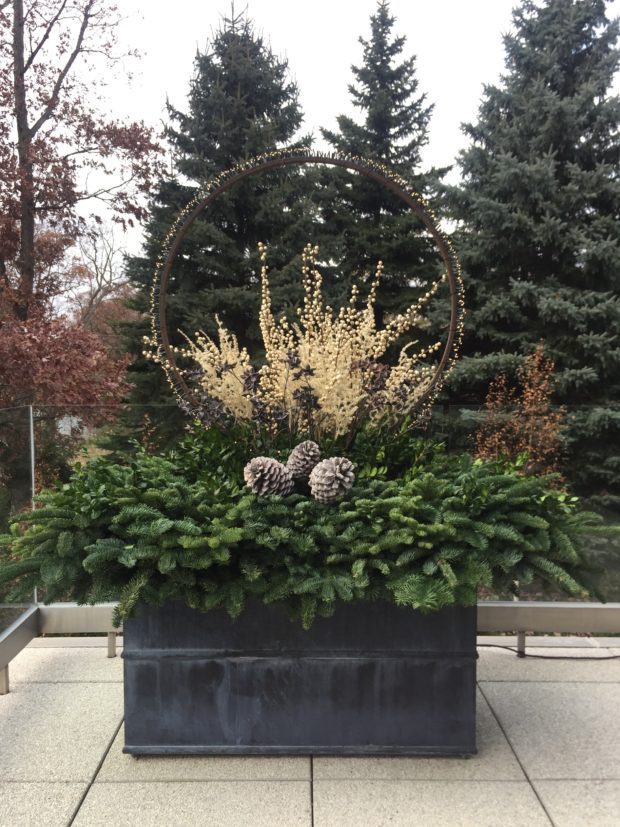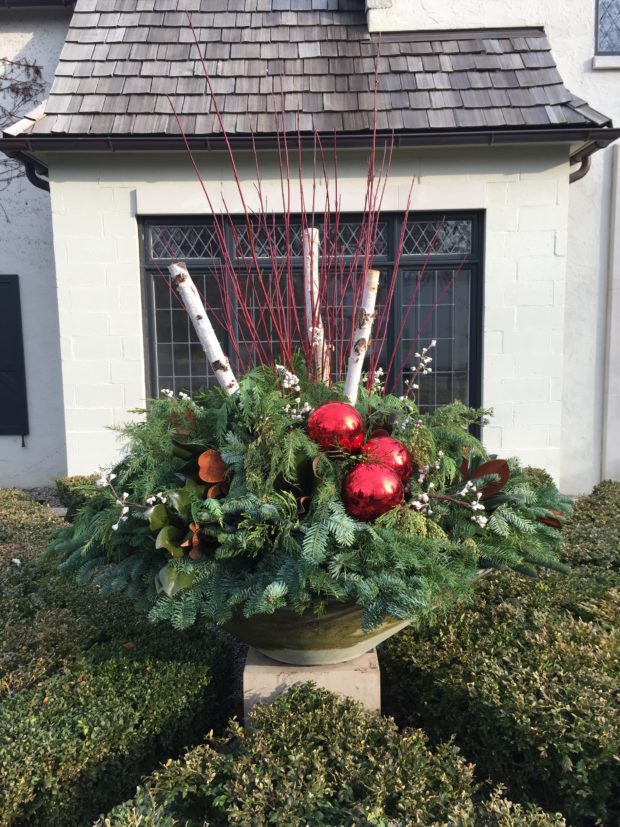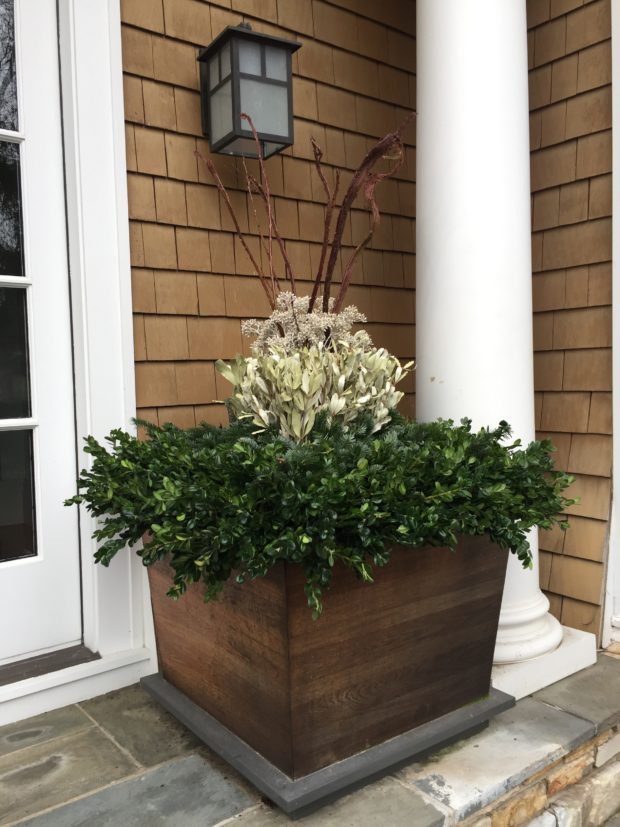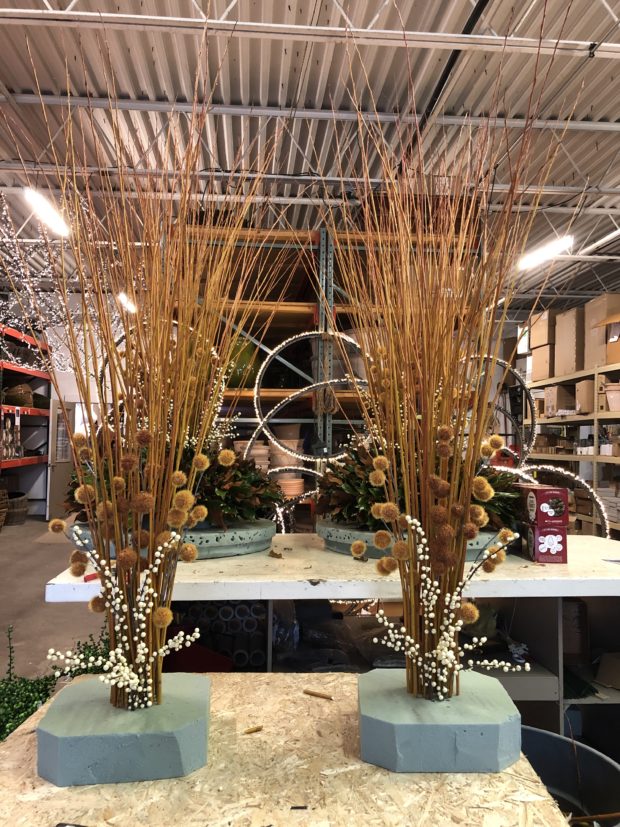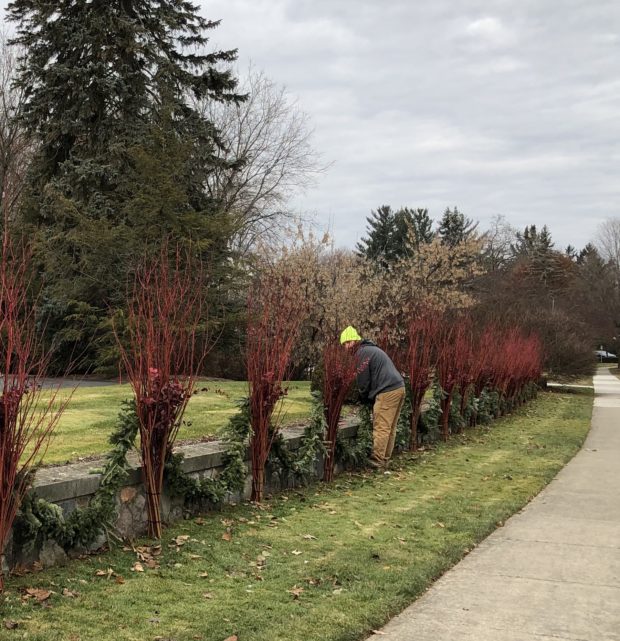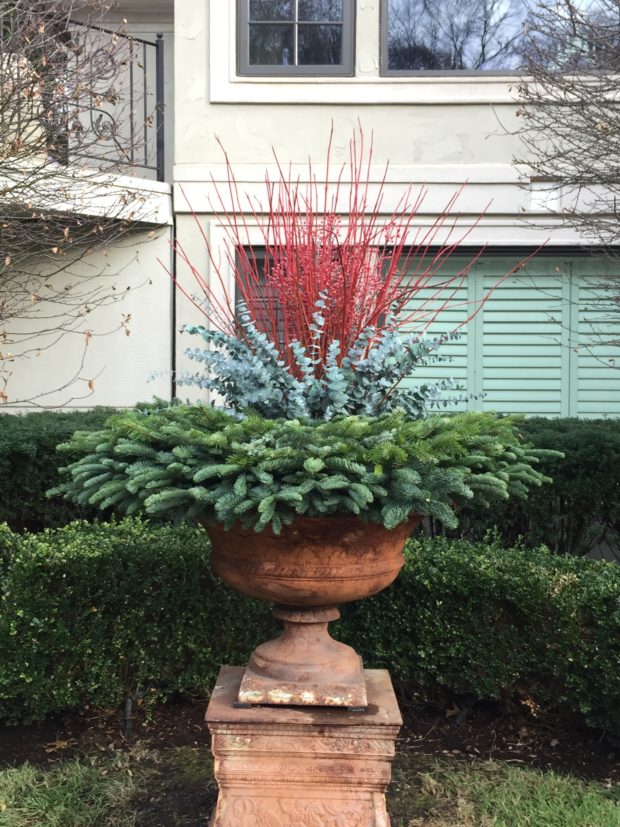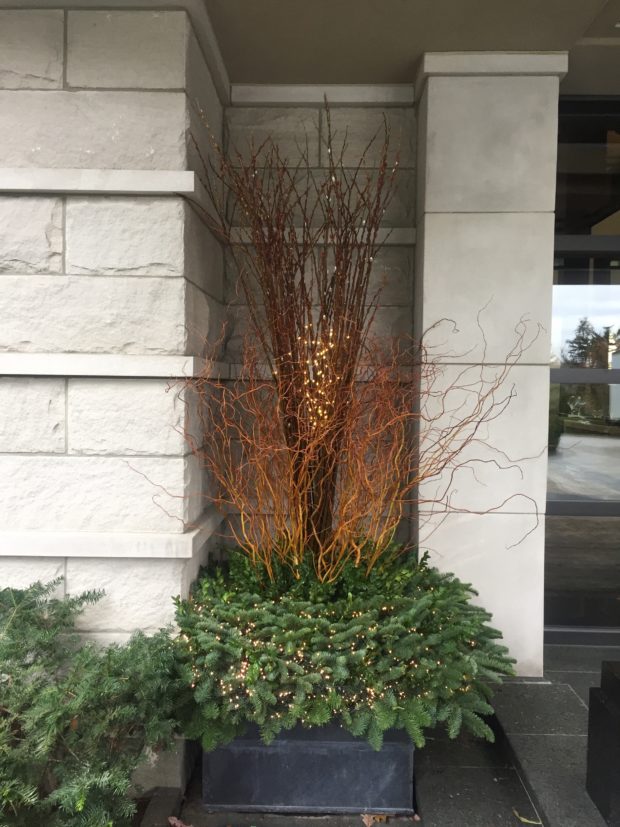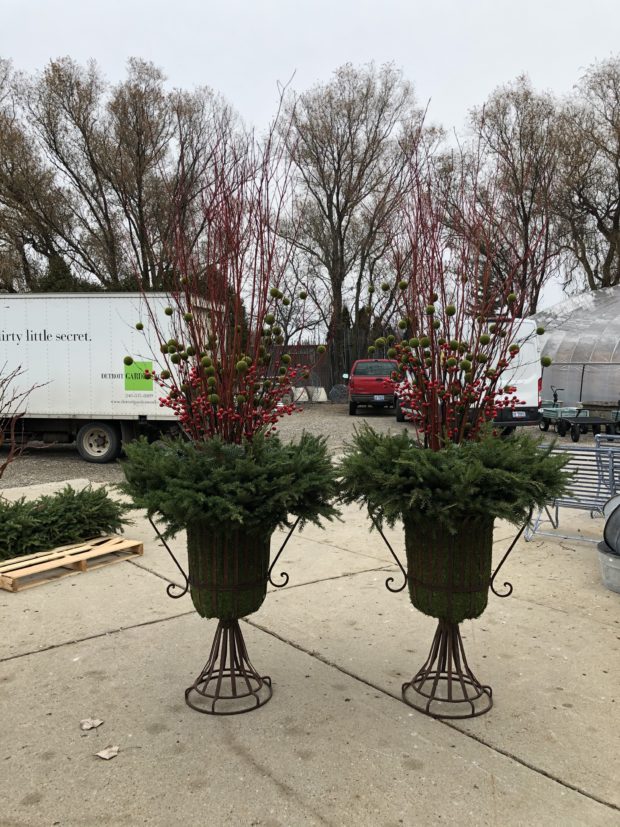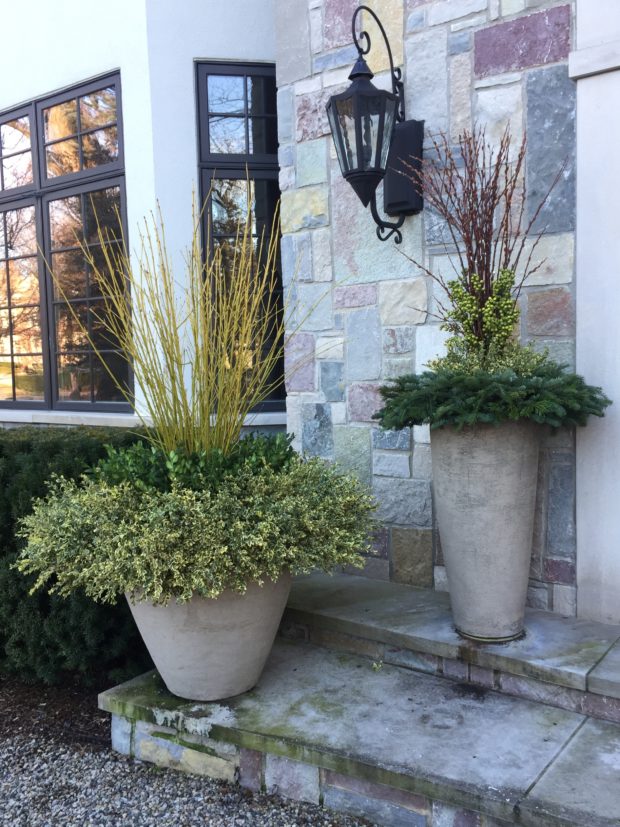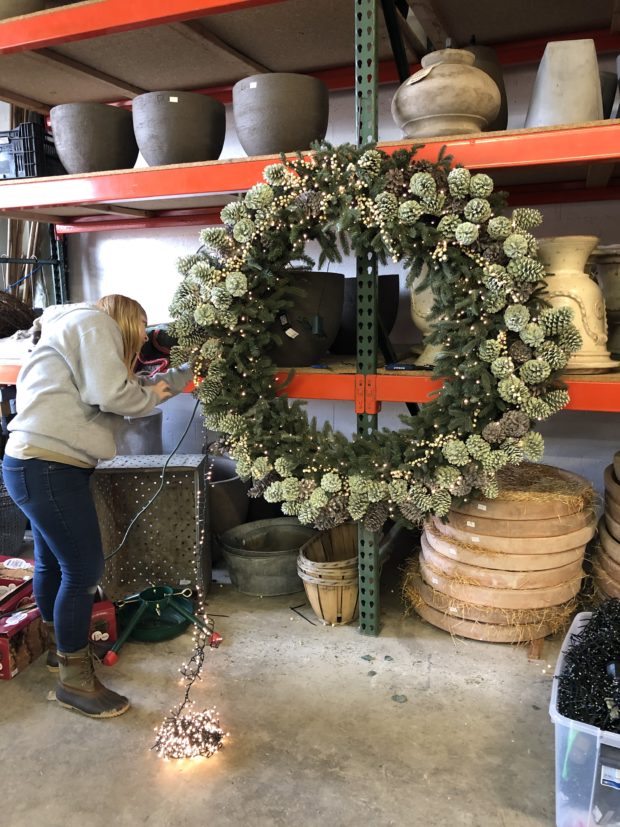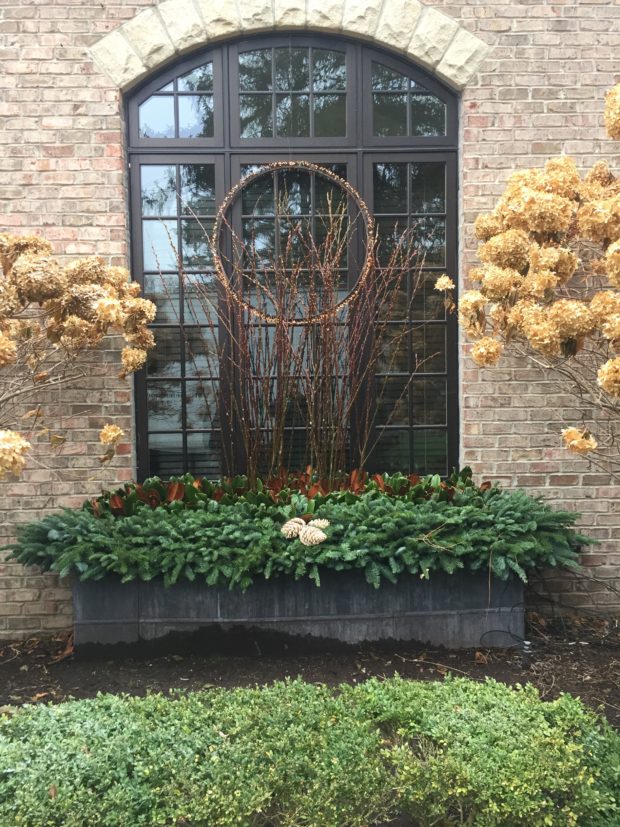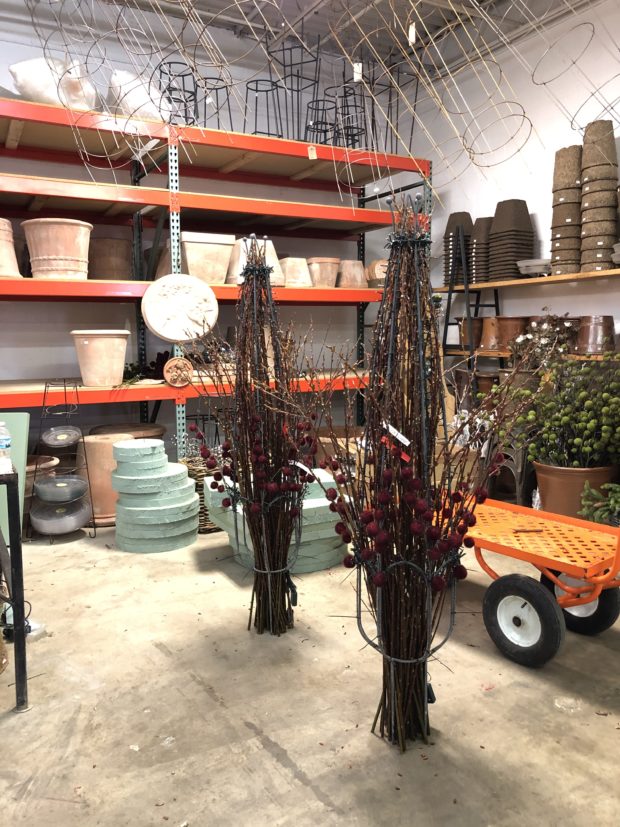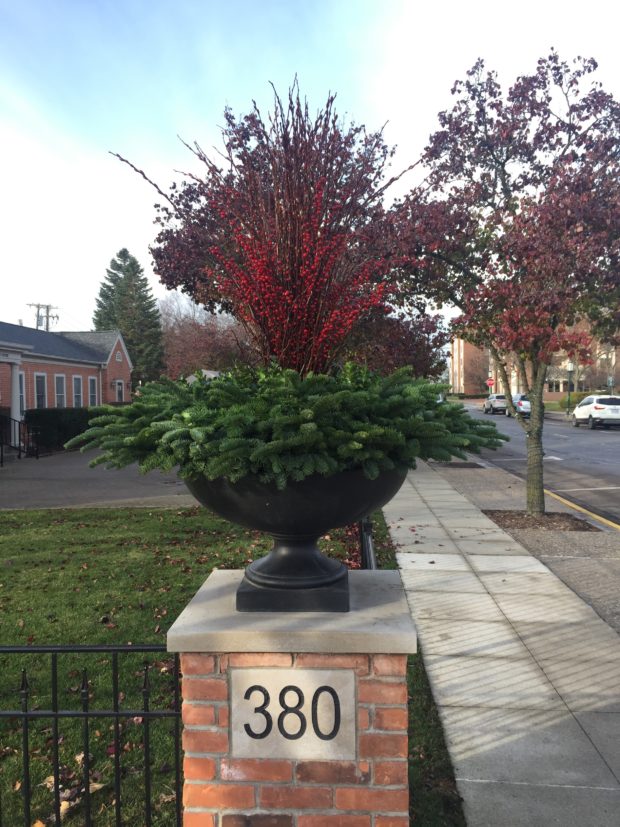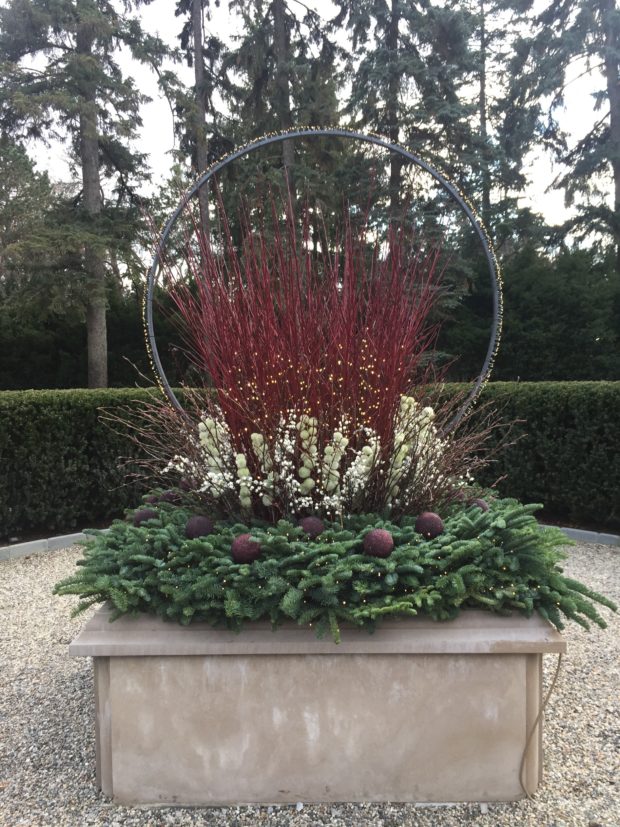 To follow are some visual highlights of our winter work. I will not fault anyone who cannot wade through them all! My group produced a prodigious amount of work the past five weeks, and I am pleased that every winter project we had is finished. We are better than halfway through the Detroit Garden Works winter garden. Then it will be time to do my pots at home.
To follow are some visual highlights of our winter work. I will not fault anyone who cannot wade through them all! My group produced a prodigious amount of work the past five weeks, and I am pleased that every winter project we had is finished. We are better than halfway through the Detroit Garden Works winter garden. Then it will be time to do my pots at home.
Search Results for: Latest updated CDCP Test Topics Pdf Spend Your Little Time and Energy to Clear CDCP exam 🌗 Open 【 www.pdfvce.com 】 enter ➤ CDCP ⮘ and obtain a free download 🔊Test CDCP Assessment
At A Glance: Recent Work
All Hellebores Great and Small
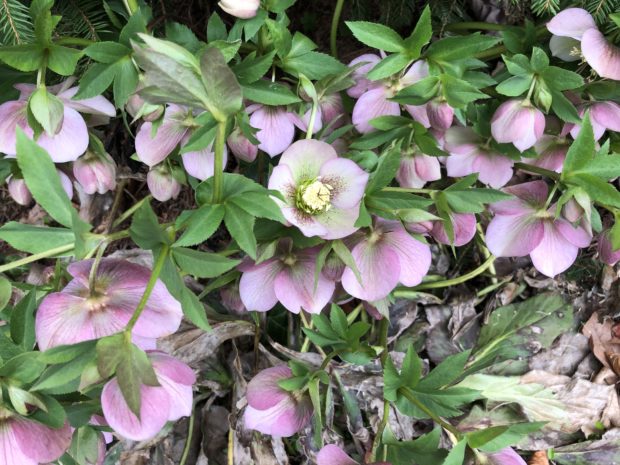 My first exposure to hellebores was likely in the 1970’s. Though gardening consumed every available moment and most of any available cash I had for plants, there were no hellebores in my yard. I could buy five other plants for the money it took to buy one hellebore. My Mom, on the other hand, being much more solvent than I, had an ever expanding collection. At first, I could not understand her fascination with them. Topping out at a foot or 16″ tall, it took 5 years to grow on a decent sized clump. The foliage was certainly attractive, but the flowers left quite a bit to be desired. Enjoying them was a necessarily interactive experience. The flowering stems were lax and thin. To enjoy them, one needed to bend over to half one’s height, pick up the drooping bloom, and turn it skyward. As pictured above, helleborus x hybridus varieties of old provided the gardener an excellent view of the flower’s backsides. The one flower looking at you was a bloom that I cut, and laid face up on the plant. Not that the back wasn’t beautiful, it just did not provide the thrill of a full front view. As in, face to face.
My first exposure to hellebores was likely in the 1970’s. Though gardening consumed every available moment and most of any available cash I had for plants, there were no hellebores in my yard. I could buy five other plants for the money it took to buy one hellebore. My Mom, on the other hand, being much more solvent than I, had an ever expanding collection. At first, I could not understand her fascination with them. Topping out at a foot or 16″ tall, it took 5 years to grow on a decent sized clump. The foliage was certainly attractive, but the flowers left quite a bit to be desired. Enjoying them was a necessarily interactive experience. The flowering stems were lax and thin. To enjoy them, one needed to bend over to half one’s height, pick up the drooping bloom, and turn it skyward. As pictured above, helleborus x hybridus varieties of old provided the gardener an excellent view of the flower’s backsides. The one flower looking at you was a bloom that I cut, and laid face up on the plant. Not that the back wasn’t beautiful, it just did not provide the thrill of a full front view. As in, face to face.
 The flowers were about the size of a quarter or half dollar. They were broad and weighty compared to the stem. No wonder the flowers were nodding. Another more compelling reason for their down facing blooms is practical. Upfacing large flowers can suffer damage from rain and rot, that could interfere with the production of seed. The stalk attached to the flower is known as the peduncle. This word itself suggests something robust and strong, but the stems of these hellebore flowers could not have held a flower in the upright position. It always amused my Mom when I would lie down on the ground next to one of her plants, and try to peer up at the flowers. The colors of the flowers were equally as unsatisfying. The thin petals of the white flowered strains were a dirty white, most likely due to their translucence. The reds were overlaid with green, and the pinks were anemic.
The flowers were about the size of a quarter or half dollar. They were broad and weighty compared to the stem. No wonder the flowers were nodding. Another more compelling reason for their down facing blooms is practical. Upfacing large flowers can suffer damage from rain and rot, that could interfere with the production of seed. The stalk attached to the flower is known as the peduncle. This word itself suggests something robust and strong, but the stems of these hellebore flowers could not have held a flower in the upright position. It always amused my Mom when I would lie down on the ground next to one of her plants, and try to peer up at the flowers. The colors of the flowers were equally as unsatisfying. The thin petals of the white flowered strains were a dirty white, most likely due to their translucence. The reds were overlaid with green, and the pinks were anemic.
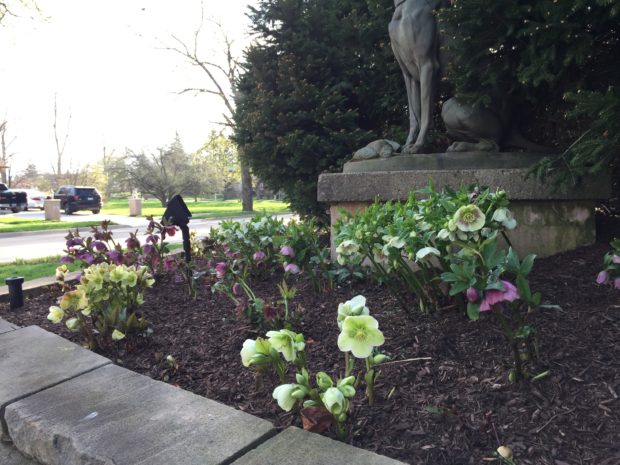 My Mom, however, was delighted with all of them. In retrospect, I attribute that to her taste, experience and sophistication in regards to garden plants. I had none of that going for me, in my 20’s. She thought her hellebores possessed a quiet and diminutive beauty. She organized an entire garden around them, and that moment when their blooming would kick off the spring season. There is something to be said for old fashioned flowers, whose size, stature, substance and color has not been tinkered with by a breeder. There are those who prefer the old fashioned feverfew to their button style double counterparts. Single flowered hollyhocks are so beautiful. The double flowered varieties look alarmingly like tissue papers suitable for a parade float.
My Mom, however, was delighted with all of them. In retrospect, I attribute that to her taste, experience and sophistication in regards to garden plants. I had none of that going for me, in my 20’s. She thought her hellebores possessed a quiet and diminutive beauty. She organized an entire garden around them, and that moment when their blooming would kick off the spring season. There is something to be said for old fashioned flowers, whose size, stature, substance and color has not been tinkered with by a breeder. There are those who prefer the old fashioned feverfew to their button style double counterparts. Single flowered hollyhocks are so beautiful. The double flowered varieties look alarmingly like tissue papers suitable for a parade float.
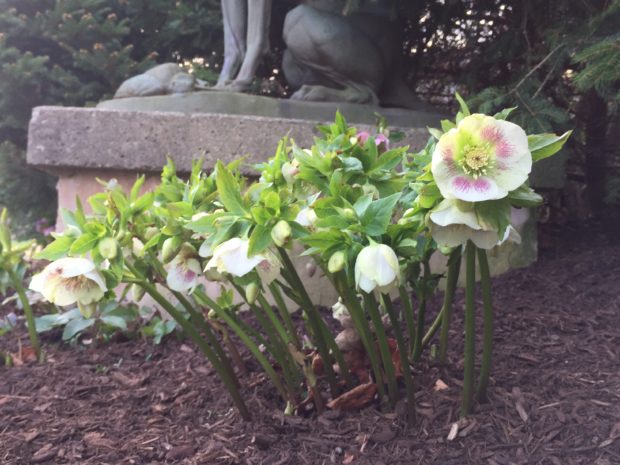 The irregularly blushing coloration of this Royal Heritage strain hellebore flower is charming, not arresting. I was lucky to have a single flower, by virtue of the support provided by the flower bud below it, face out. Otherwise, I would have no idea what the flowers look like. What a shy group this is!
The irregularly blushing coloration of this Royal Heritage strain hellebore flower is charming, not arresting. I was lucky to have a single flower, by virtue of the support provided by the flower bud below it, face out. Otherwise, I would have no idea what the flowers look like. What a shy group this is!
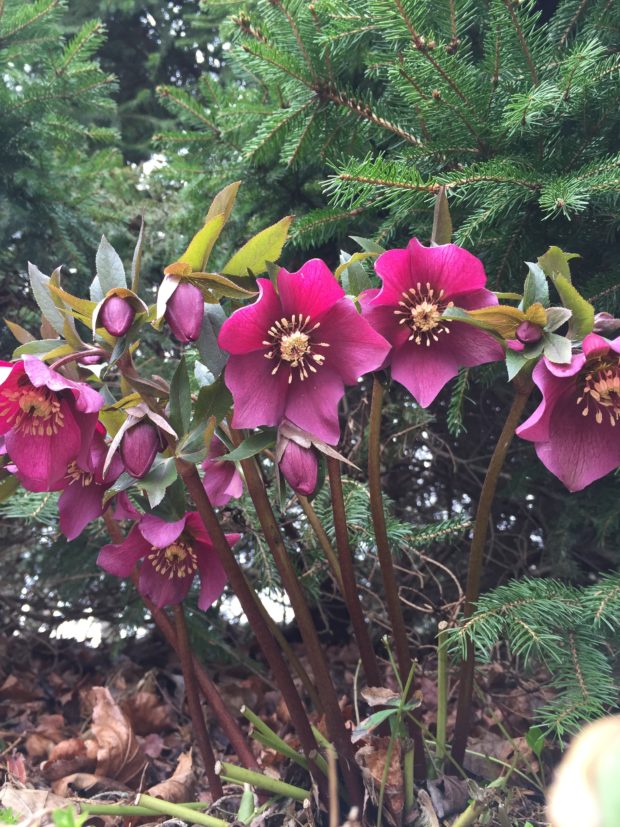 This rose pink seed grown hellebore from the same strain has small rather pointed petals that do not overlap so much. This particular plant has more side facing flowers than nodders, so it is easier to enjoy.
This rose pink seed grown hellebore from the same strain has small rather pointed petals that do not overlap so much. This particular plant has more side facing flowers than nodders, so it is easier to enjoy.
 This is one of my favorites from this old fashioned group. I picked the flower, and set it on the ground to photograph it. This is a good photograph for identifying the flower parts. What appear to be pink petals are actually modified petals known as sepals. Most flowers drop their petals one they are fertilized. But these pink sepals will age to green, and persist on the plant for many weeks. A group of sepals form a calyx, the purpose of which is to protect the flower, and its reproductive parts. The actual flower is comprised of short petals that have rolled up, closed, and formed tubes, or nectaries. In this picture, the nectaries are those green crescent shaped forms that encircle all the reproductive parts. The stamens, or male reproductive parts, have anthers at the top, which hold the pollen. They appear as cream white dots in the above picture. The female reproductive parts, the pointy shaped carpels, have not grown out yet. When they do, they will grow and enlarge into what will become the seeds. The sex lives of plants is complex and fascinating-and requires the assistance a third disinterested party, as in insects, wind, or bees.
This is one of my favorites from this old fashioned group. I picked the flower, and set it on the ground to photograph it. This is a good photograph for identifying the flower parts. What appear to be pink petals are actually modified petals known as sepals. Most flowers drop their petals one they are fertilized. But these pink sepals will age to green, and persist on the plant for many weeks. A group of sepals form a calyx, the purpose of which is to protect the flower, and its reproductive parts. The actual flower is comprised of short petals that have rolled up, closed, and formed tubes, or nectaries. In this picture, the nectaries are those green crescent shaped forms that encircle all the reproductive parts. The stamens, or male reproductive parts, have anthers at the top, which hold the pollen. They appear as cream white dots in the above picture. The female reproductive parts, the pointy shaped carpels, have not grown out yet. When they do, they will grow and enlarge into what will become the seeds. The sex lives of plants is complex and fascinating-and requires the assistance a third disinterested party, as in insects, wind, or bees.
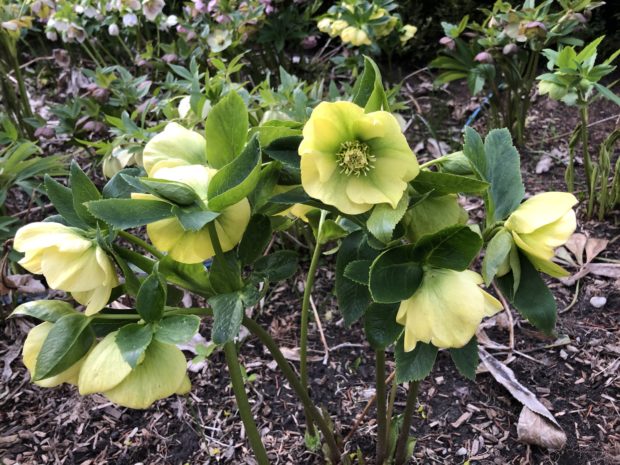 The newer cultivars of hellebores are quite astonishing. I still remember the first time I saw a yellow flowered hellebore. I could hardly believe it was real. The above pictured hellebore from the Spring Promise series is called Sally. It is a robust grower. As many flowers face out to the side as face down. Outfacing flowers are still able to shed rain water, limiting rot in the center of the flower. More flowers than not have 7 sepals, as opposed to the old fashioned 5. There is a good bit of overlap to the sepals, resulting in color that is richer and more brilliant.
The newer cultivars of hellebores are quite astonishing. I still remember the first time I saw a yellow flowered hellebore. I could hardly believe it was real. The above pictured hellebore from the Spring Promise series is called Sally. It is a robust grower. As many flowers face out to the side as face down. Outfacing flowers are still able to shed rain water, limiting rot in the center of the flower. More flowers than not have 7 sepals, as opposed to the old fashioned 5. There is a good bit of overlap to the sepals, resulting in color that is richer and more brilliant.
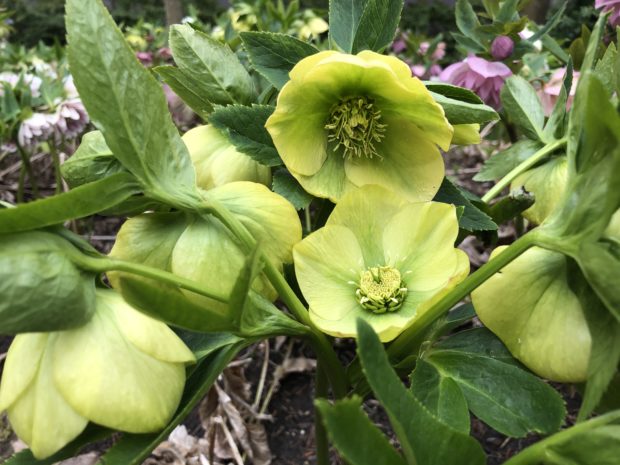 The size of the flowers is considerable larger than those on my older hybrids. 15 flowers of this size gives the plant the impact of a small shrub.
The size of the flowers is considerable larger than those on my older hybrids. 15 flowers of this size gives the plant the impact of a small shrub.
 Also a member of the “Spring Promise” series is this named variety, Connie. The white sepals have plenty of substance, meaning they are thick enough to read bright white. The spots are a striking visual plus. I am sure there is every bit of 150 stamens on this flower. There are so many, the nectaries are almost completely obscured. It has an exotic, rather than charming appearance.
Also a member of the “Spring Promise” series is this named variety, Connie. The white sepals have plenty of substance, meaning they are thick enough to read bright white. The spots are a striking visual plus. I am sure there is every bit of 150 stamens on this flower. There are so many, the nectaries are almost completely obscured. It has an exotic, rather than charming appearance.
 From the hybridizing efforts of Marietta Byrnes, her “Winter Jewels” strain known as Jade Star” features green flowers with maroon red markings and picotee edging. The original plants in her strain have large areas of plum and wine red over the green, but seedlings can vary considerably from the original.
From the hybridizing efforts of Marietta Byrnes, her “Winter Jewels” strain known as Jade Star” features green flowers with maroon red markings and picotee edging. The original plants in her strain have large areas of plum and wine red over the green, but seedlings can vary considerably from the original.
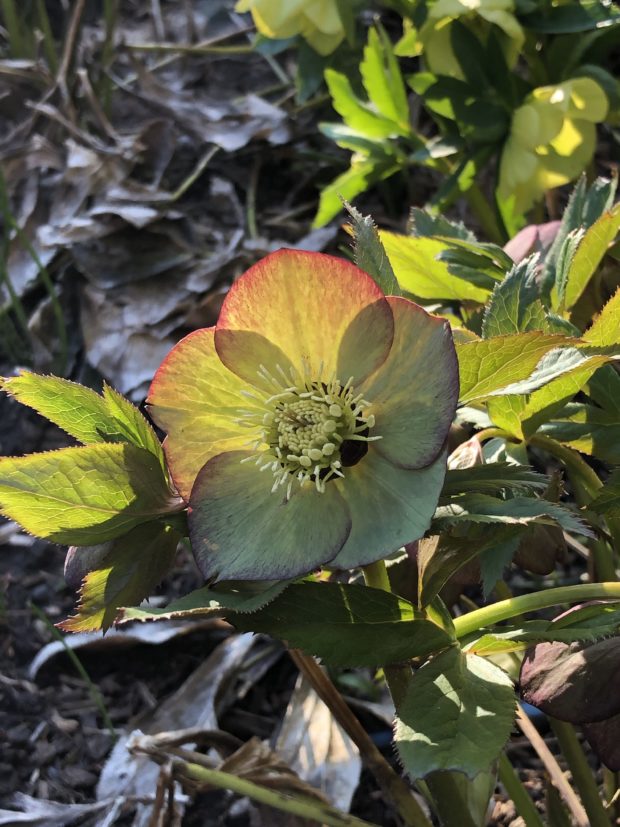 This is another version of Jade Star. Since hellebores from a strain do not come true to seed, it is best to pick them in flower so you know exactly what you will get. That said, I like every version of this moody colored hellebore strain I have seen.
This is another version of Jade Star. Since hellebores from a strain do not come true to seed, it is best to pick them in flower so you know exactly what you will get. That said, I like every version of this moody colored hellebore strain I have seen.
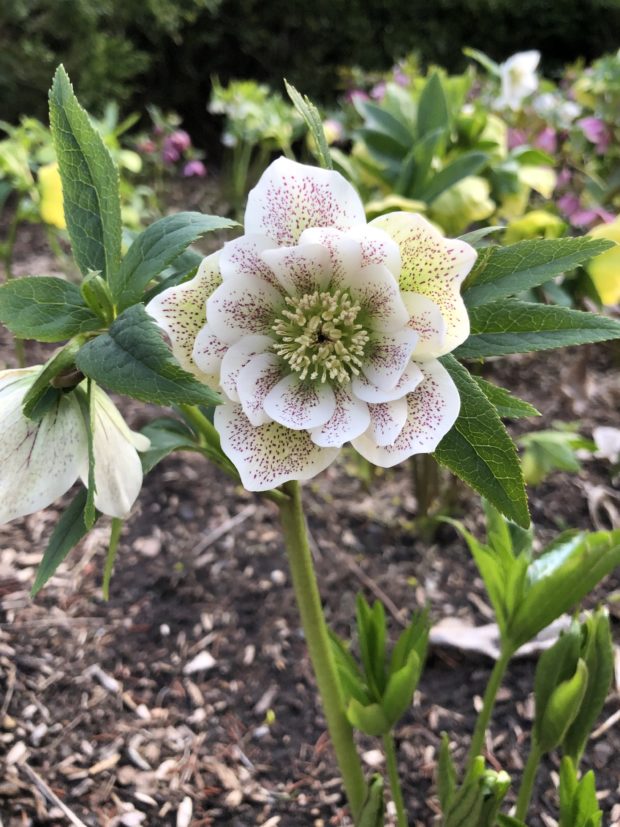 The double flowered hellebores are indeed showstopping. This particular plant is from the helleborus x hybridus Winter Dreams series “Elegance White”. In all the years I have had it, it has increased only modestly. But as reluctant as it is to put on weight, it is breathtaking, and well worth the wait.
The double flowered hellebores are indeed showstopping. This particular plant is from the helleborus x hybridus Winter Dreams series “Elegance White”. In all the years I have had it, it has increased only modestly. But as reluctant as it is to put on weight, it is breathtaking, and well worth the wait.
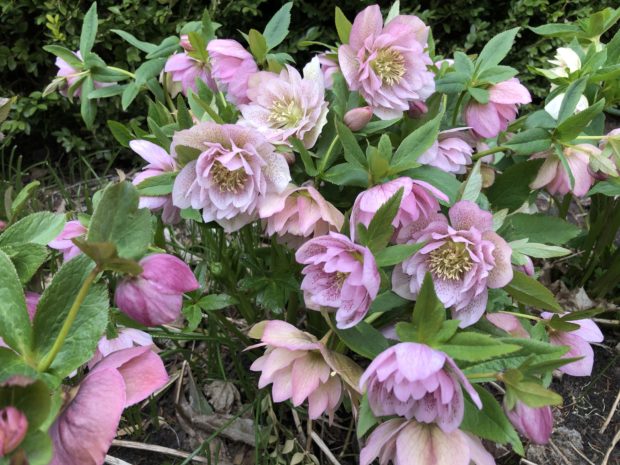 This double pink hellebore is also from the Spring Promise series, and is called “Frilly Kitty”. 7 years post planting, it is spectacular in size and bloom this year. Hellebores of any genetic background increase slowly, so the cost of good sized plants is considerable. This cultivar is vigorous and healthy, and gets no care from me besides supplemental water when it is dry. This is breathtaking example of what modern hybridizing has achieved. Is it better? I like having a range of cultivars both great and small.
This double pink hellebore is also from the Spring Promise series, and is called “Frilly Kitty”. 7 years post planting, it is spectacular in size and bloom this year. Hellebores of any genetic background increase slowly, so the cost of good sized plants is considerable. This cultivar is vigorous and healthy, and gets no care from me besides supplemental water when it is dry. This is breathtaking example of what modern hybridizing has achieved. Is it better? I like having a range of cultivars both great and small.
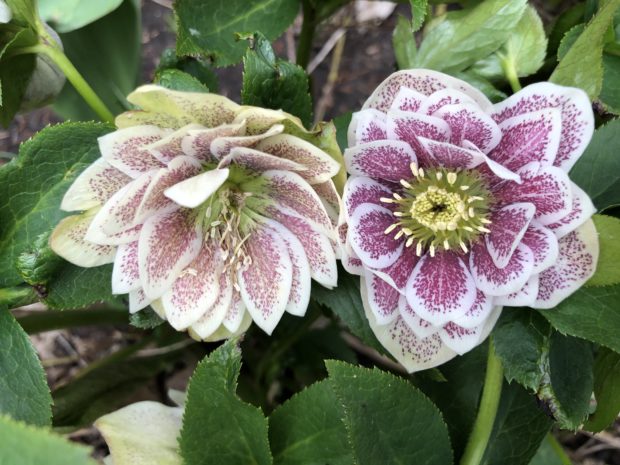 I cannot remember your name, but I am happy to be hosting you in my garden.
I cannot remember your name, but I am happy to be hosting you in my garden.
I Can Be Fancy
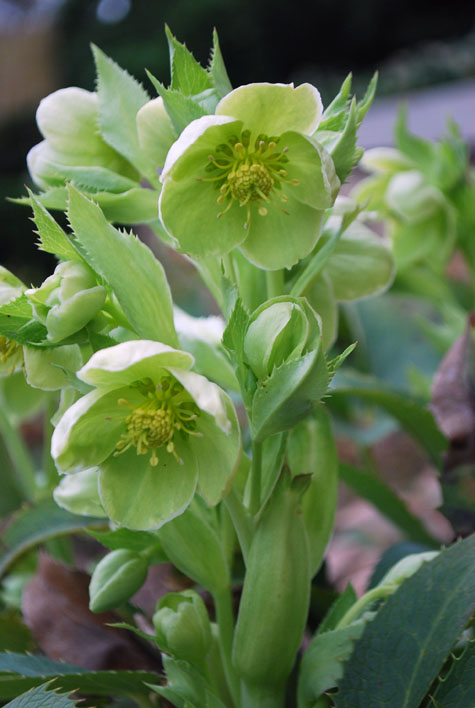
If I had to, I could live on artichokes, good bread and butter (with enough butter for the artichokes), and sandwiches from ham, asparagus, and hard boiled eggs. Peanut butter would be good, too-and liverwurst. In matters of living, I like the slightly mildewed taste of water from the hose, an occasional whopper and fries from a certain east side location that serves them fresh, hot, and with a hello, and how are you, my garden, and a clean house after a long dirty day-not too fancy.
But I can be very particular about the plants I love. My hellebores are holding court right now-HOW I love them. I am especially wild for the big species, helleborus argutifolius. Then helleborus corsicus. Then Helleborus lividus-you may get from this that I have a big love for green flowers. Then the white and green versions of Helleborus orientalis-I could go on. Being a zone 5-6, some hellebores are dicey; I make the time to baby them. On my small city lot and one half, I give space to the striking argutifolius, paired with beech ferns. What a happy combination-under my Princeton Gold maples. Every day, at the end of the day, I look at this combination over a cocktail, and celebrate my good life. My good life is my good garden-I am sure you know this about me by now.
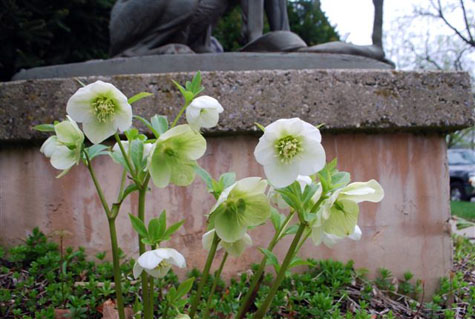
 Its important to figure out what you really love, and what you can do without. This is expressing your voice. Its also the engine that powers your design. Add hellebores to your dictionary if they enchant you-if they don’t, what would go in your dictionary?
Its important to figure out what you really love, and what you can do without. This is expressing your voice. Its also the engine that powers your design. Add hellebores to your dictionary if they enchant you-if they don’t, what would go in your dictionary?
Its the season for hellebores-give a look see.
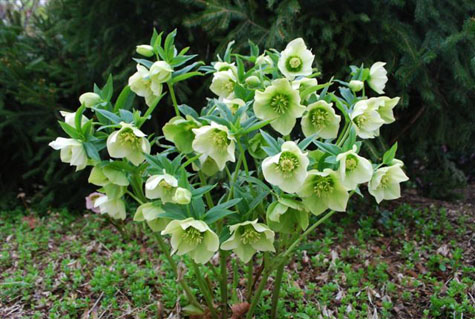

Green Respite
 If all the color of my past few posts has put you on overload, perhaps these pots will suit you better. As I have said, annual plants are those plants that survive but one season-this is a large group-some of which have no flowers of consequence.
If all the color of my past few posts has put you on overload, perhaps these pots will suit you better. As I have said, annual plants are those plants that survive but one season-this is a large group-some of which have no flowers of consequence.
 Annual plantings or pots without flowers can be very effective and attractive. Some locations for annuals do not have enough sun to support good flower production. Annual plants can be as much about their forms, their leaves, and their architecture, as they are about flowers. This very tall “elegant feather” plant-no longer in production at Proven Winners, is a great foil for the round-leaved farfugiums. There are very few greens I do not like. My yews go black green in the winter when it is really cold, much like this Moses in the Cradle. The chartreuse and yellow coleus “Wild Lime” provides lots of punch in shade.
Annual plantings or pots without flowers can be very effective and attractive. Some locations for annuals do not have enough sun to support good flower production. Annual plants can be as much about their forms, their leaves, and their architecture, as they are about flowers. This very tall “elegant feather” plant-no longer in production at Proven Winners, is a great foil for the round-leaved farfugiums. There are very few greens I do not like. My yews go black green in the winter when it is really cold, much like this Moses in the Cradle. The chartreuse and yellow coleus “Wild Lime” provides lots of punch in shade.
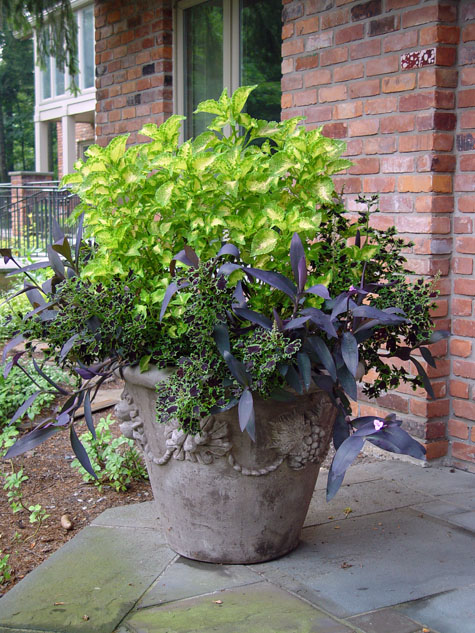 Chartreuse green is spring like, and fresh, no matter what time of year I see it.Grass after an electrical storm is so intensely dark gorgeous green-thus the term grass green. Lime creeping jenny is a versatile plant that highlights darker plants and obligingly trails.
Chartreuse green is spring like, and fresh, no matter what time of year I see it.Grass after an electrical storm is so intensely dark gorgeous green-thus the term grass green. Lime creeping jenny is a versatile plant that highlights darker plants and obligingly trails.
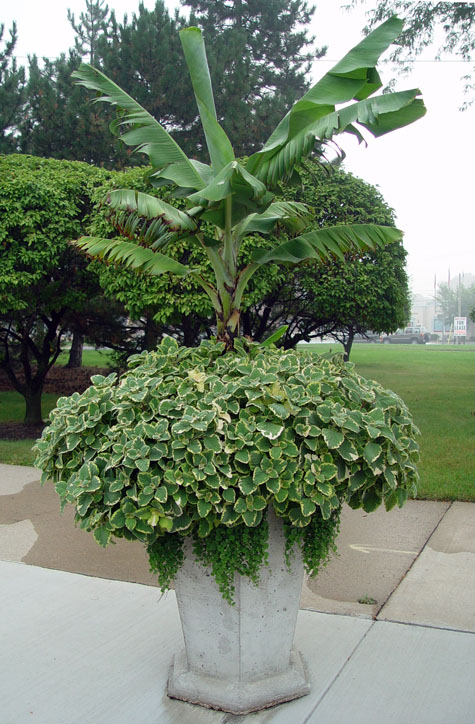 Green can be as much about texture and scale, as color. The slick, massive texture of this banana is complimented by the thick felted leaves of this variegated Plectranthus.
Green can be as much about texture and scale, as color. The slick, massive texture of this banana is complimented by the thick felted leaves of this variegated Plectranthus.
 Caladiums, calocasias, and cannas have spectacularly large foliage.
Caladiums, calocasias, and cannas have spectacularly large foliage. 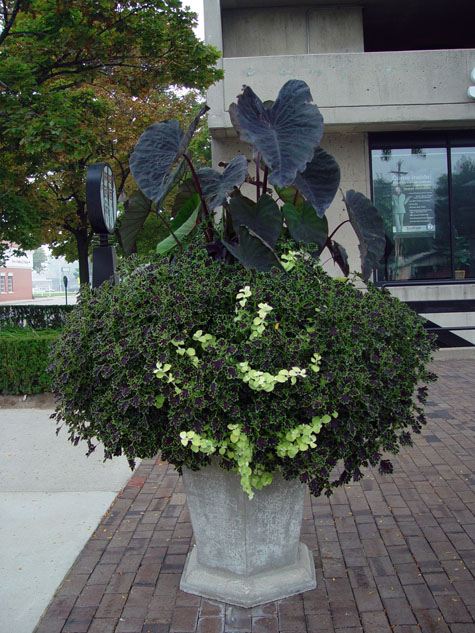 Calocasias and caladiums are thin-leaved (this refers to their “substance”); light will shine through them. Helicrysum both in lime and variegated leaf are densely felted.
Calocasias and caladiums are thin-leaved (this refers to their “substance”); light will shine through them. Helicrysum both in lime and variegated leaf are densely felted. 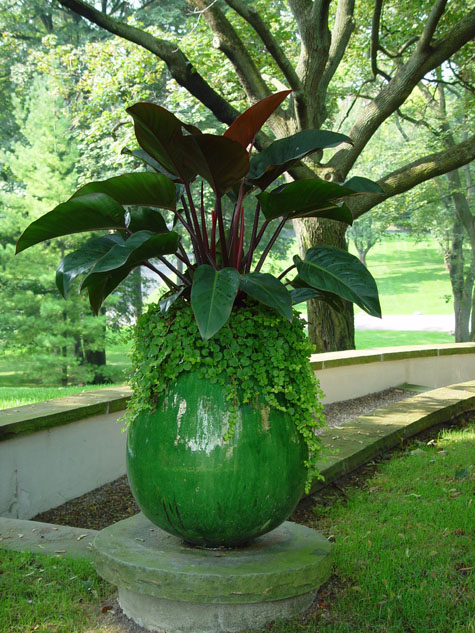
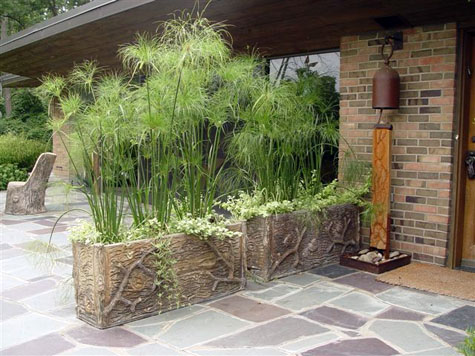
I confess I lump most houseplants into the genus “houseplant”, but most of them are good outdoors in shady spots. King Tuts, like other reeds and grasses have the added graceful beauty of motion.
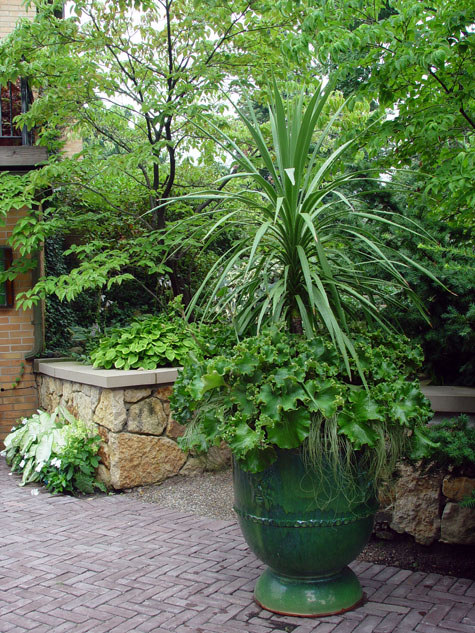 Phormiums, and dracaenas are stiff-strapped, and sword-like-an interesting contrast to this curly leaved farfugium. Cycads and escheverias have that dense waxy texture, and can be rounded, or spiky.
Phormiums, and dracaenas are stiff-strapped, and sword-like-an interesting contrast to this curly leaved farfugium. Cycads and escheverias have that dense waxy texture, and can be rounded, or spiky.

 Tuscan blue kale has great size, a blistered leaf surface, and a very blue color-just the thing to pair with a blue juniper column, variegated licorice, and ornamental oregano “Kent Beauty” .
Tuscan blue kale has great size, a blistered leaf surface, and a very blue color-just the thing to pair with a blue juniper column, variegated licorice, and ornamental oregano “Kent Beauty” .
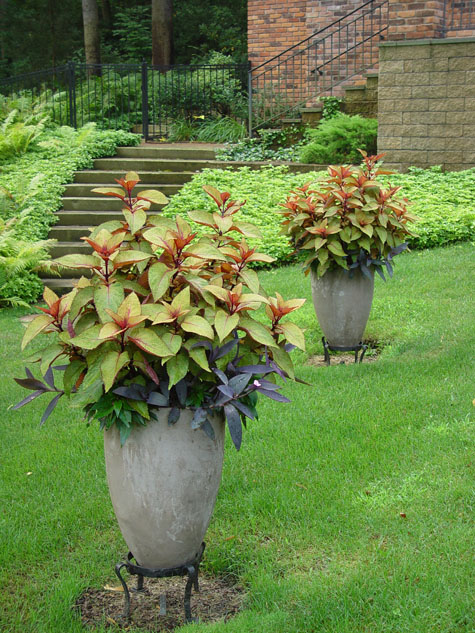 One of my favorite coleus is a yellow/olive color I call turtle green. The striped grass, miscanthus zebrina, is a happy companion to a plectranthus with the same color variation. The third element: the pairing of the plant material is complimented by the pairing of the pots close enough to encourage all the plectranthus to grow together.
One of my favorite coleus is a yellow/olive color I call turtle green. The striped grass, miscanthus zebrina, is a happy companion to a plectranthus with the same color variation. The third element: the pairing of the plant material is complimented by the pairing of the pots close enough to encourage all the plectranthus to grow together.
 So many beautiful greens. So many ways in which green is beautiful.
So many beautiful greens. So many ways in which green is beautiful.

